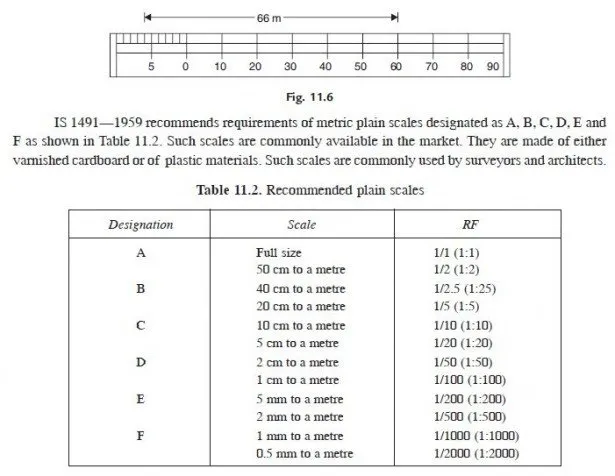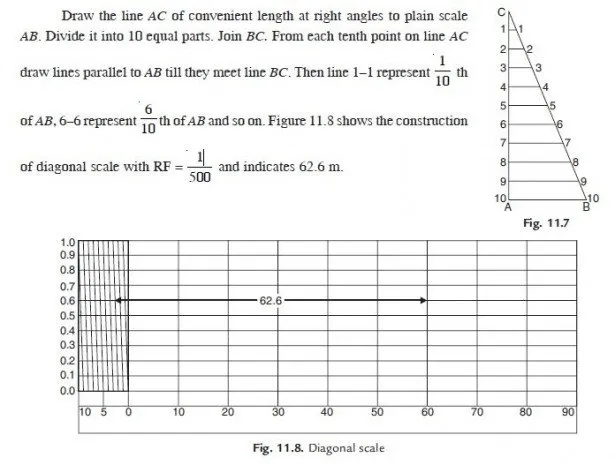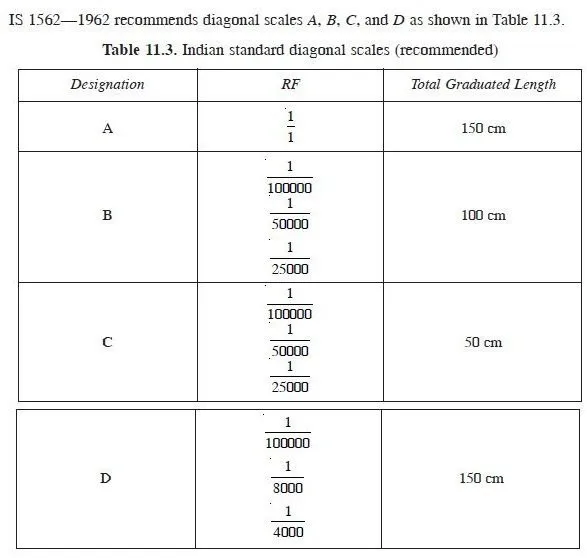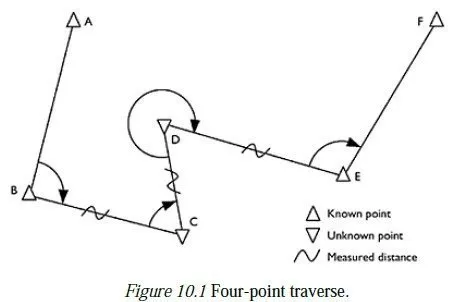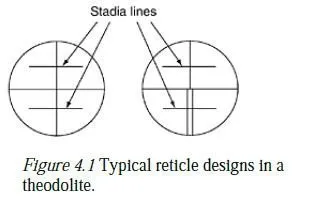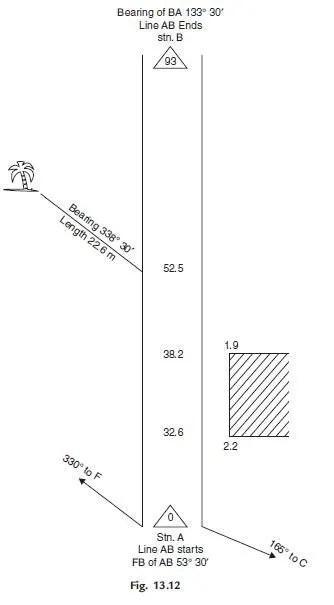The following two types of scales are used in surveying:
(i) Plain Scale
(ii) Diagonal Scale.
11.7.1 Plain Scale
On a plain scale it is possible to read two dimensions directly such as unit and tenths. This scale is not drawn like ordinary foot rule (30 cm scale). If a scale of 1 : 40 is to be drawn, the markings are not like 4 m, 8 m, 12 m etc. at every 1 cm distance. Construction of such a scale is illustrated with the example given below:
Example 11.1: Construct a plain scale of RF = 1 /500 and indicate 66 m on it.
Solution. If the total length of the scale is selected as 20 cm, it represents a total length of 500 × 20 = 10000 cm = 100 m. Hence, draw a line of 20 cm and divide it into 10 equal parts.
Hence, each part correspond to 10 m on the ground. First part on extreme left is subdivided into 10 parts, each subdivision representing 1 m on the field. Then they are numbered as 1 to 10 from right to left as shown in Fig. 11.6. If a distance on the ground is between 60 and 70 m, it is picked up with a divider by placing one leg on 60 m marking and the other leg on subdivision in the first part. Thus field distance is easily converted to map distance.
11.7.2 Diagonal Scale
In plain scale only unit and tenths can be shown whereas in diagonal scales it is possible to show units, tenths and hundredths. Units and tenths are shown in the same manner as in plain scale. To show hundredths, principle of similar triangle is used. If AB is a small length and its tenths are to be shown, it can be shown as explained with Fig. 11.7 below.
Draw the line AC of convenient length at right angles to plain scale
AB. Divide it into 10 equal parts. Join BC. From each tenth point on line AC
draw lines parallel to AB till they meet line BC. Then line 11 represent 1 / 10
th of AB, 66 represent 6 / 100
th of AB and so on. Figure 11.8 shows the construction
of diagonal scale with RF = 1 / 500 and indicates 62.6 m.
